On Robert Redford
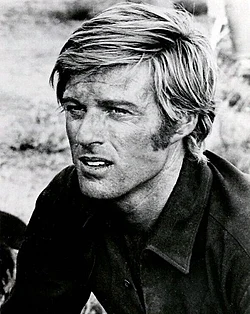
I once met the actor and director Robert Redford. I was a young reporter in Denver back then, covering the state legislature and Colorado governor’s office for the now-defunct Rocky Mountain News. I’d received a tip that Redford was set to have breakfast the following morning at the Governor’s Mansion with then-Gov. Dick Lamm. I showed up early and met Redford at the door. After introducing myself, I asked why the two men were meeting? He brushed me off—politely—and suggested we could talk at a function later that day where he was scheduled to speak publicly. When I approached him there, he brushed me off once more, again politely, with that characteristic mix of charm and aloofness that seemed effortless for him. I don’t remember what his purpose in Denver was that day. I do, however, vividly remember how he struck me in person. He was shorter and even more handsome than on screen. He wore a wool sportscoat, trousers, cowboy boots, a western-style shirt, a beaded Navajo belt, and aviator-style glasses with a tiny chip missing from the corner of one lens. It was such a small, humanizing detail for someone who seemed otherwise carved out of cinematic perfection. What has stayed with me more than that memory, though—call it confluence or simple coincidence–is how much of my own life seemed to weirdly intersect with some of his films. In my late teens, for example, I got big into winter mountain camping, influenced largely by Redford’s portrayal of the rugged frontier loner in Jeremiah Johnson. That illusion ended abruptly after I fell through the ice of a freezing mountain stream above Colorado’s Guanella Pass, where a blizzard set in and a buddy and I were snowbound for a couple of days, unable to hike through tall drifts back to his truck. Shivering in my sleeping bag, wet, cold, and hungry, with little more to eat than freeze-dried oatmeal, I realized quickly that I was not, and never would be, Jeremiah Johnson. I chose to become a journalist in large measure after watching All the President’s Men. Seeing Redford as Washington Post reporter Bob Woodward, relentless in pursuit of the truth with his partner, Carl Bernstein, made the job look not only meaningful but thrilling. While still in college, I watched Three Days of the Condor, in which Redford plays an unwitting intelligence analyst caught in a web of espionage. Not long after graduating, the CIA recruited me and flew me back to Washington for a series of job interviews. The position they were considering me for was not one that I was particularly keen on, and the job was never offered. Many years later, after leaving daily journalism, I would wind up working under contract for both the CIA and the DIA. My work was hardly the stuff of Hollywood spy flicks, but walking around inside the intelligence community with a top-secret clearance did make me feel, perhaps if only a little, like I was inhabiting a Redford role. Redford played a barnstorming, devil-may-care pilot in The Great Waldo Pepper, flying around in an open-cockpit biplane. I, too, became a pilot, though a much more cautious one. There were other intersections, if you could call them that. I once was invited to audition for a non-speaking part in The Electric Horseman, a modern Western starring Redford and Jane Fonda. The audition required that I show up at a modeling agency one hot summer day, wearing a flannel shirt (why a flannel shirt, I have no idea). In any case, as I drove into the parking lot, I observed several studly-looking young men milling about outside. They all looked like professional actors, and they were all wearing flannel shirts. I decided in that moment that I was not an actor and had no desire to be one. I drove out of that parking lot and never looked back. Years later, as a working screenwriter, I pitched a couple of movie ideas to executives at Wildwood Productions, Redford’s film development company. Alas, my pitches went nowhere. What was no less disappointing was that I never saw Redford in his office; I still wanted to ask him about that mysterious breakfast with Gov. Lamm. This morning, news came that Robert Redford had passed away at 89. It’s hard to reconcile that he was as old as he was. He seemed timeless, the embodiment of vigor and youth. To me, he was more than a movie star. He was a mirror, however distant, reflecting back the ambitions, adventures, and even missteps of my own life. In a way, I’d like to believe that many of his films became personal guideposts, nudging me toward choices that shaped who I ultimately became. They provided me with more than entertainment. They gave me the sense that, even for a poor kid from Colorado, it was possible to lead a life with curiosity and perhaps even a touch of daring. What also made Redford noteworthy was that he never limited himself to the bright lights of Hollywood. He poured his influence, money, and energy into causes that he believed mattered—protecting the environment, preserving open spaces, elevating independent voices in film, and fostering civil discourse. He founded the Sundance Institute not only to showcase fresh talent, but to create a community where stories outside the mainstream could find life. His activism was steady and genuine, proving that celebrity can serve more than self-promotion; it can offer stewardship. Robert Redford reminded us that the world is larger than our fears, richer than our routines, and worth chasing with everything we’ve got. That is how I’ll remember him: not just as an actor, director, or benefactor, but as a man whose stories helped me find my own.
Banana-Free: Confessions of a Fruit Heretic

“Why don’t you like bananas?” This is a question I used to get constantly from my children, and get constantly from my grandchildren, all of whom are militant banana enthusiasts. These are people who will eagerly wolf down bananas straight from the peel, sliced onto their cereal, blended into smoothies, and baked into muffins. They view the banana not merely as a fruit, but as a foundational food group. I, meanwhile, view bananas as an evolutionary mistake run amok. Banana-related conversations with my grandkiddos often go something like this: “Poppy (or Papa, depending on the kid), why don’t you like bananas?” “Because I don’t.”“But why?”“Because they’re weird.”“No, they’re not.”“Yes, they are. They’re squishy and they smell funny.”“But they taste good.”“To you, maybe.”“But why don’t you like them?”“I just explained it to you.”“I know, but why?” This is what I’m up against—a gaggle of persistent little fruit loyalists demanding justifications I can’t scientifically validate. If I told them I was allergic to bananas, they might show mercy. If I told them I once had a traumatic, banana-related incident involving a chimpanzee and a tricycle (not true), maybe they’d back off. But telling them bananas make me throw up a little in my mouth is unacceptable. You’d think I’d just confessed to hating puppies and kittens. And yet, despite this unrelenting pressure, I remain firmly banana-free. With all due respect to Dr. Seuss, “I do not like them here or there. I do not like them anywhere.” You may be thinking: But bananas are delicious and packed with vitamins. How can anyone possibly dislike them? To which I say: With great consistency and moral clarity. Let’s start with their taste and texture. Bananas are the only fruit that can be described simultaneously as mushy, chalky, stringy, and gummy. That’s not a description—that’s a warning label. And the smell? If the scent of overripe bananas was bottled, it would be called Eau de Decay and sold in truck stop restrooms. Then there is the look of them. They don’t resemble any other fruit in this or any other universe. Not by a mile. Bananas are shaped like punctuation marks. They bruise like amateur boxers. You blink at them wrong and overnight, they turn from edible to an environmental clean-up site. And yet, despite all this, bananas have become the default fruit of modern civilization. They are snuck into fruit salads and thrown into children’s lunches with alarming regularity. I can’t tell you the number of times I’ve gone out for breakfast and had the waitress ask me if I wanted banana slices on my oatmeal for an extra dollar or two? No, thank you. Disliking bananas includes membership in one of the most obscure clubs on the planet. Indeed, a recent Yougov.com survey found that only 5% of American adults say they dislike bananas, compared to 86% who like them, and 8% who are “neutral”, which I guess means they wouldn’t necessarily go out and buy a banana, but they wouldn’t call the cops if one showed up in their fruit bowl, either. Tragically, we who dislike bananas have no support group. No bumper stickers. No “Banana-Free Body By Choice” lapel pins. We simply suffer in silence, declining banana smoothies and discretely picking out, then flinging away, the banana slices from potluck picnic fruit salads. I figure what we need is a famous-person spokesperson—someone who shares our disdain for all things banana and can serve as the face of our movement. Unfortunately, the only celebrity I could find who comes close is Kendall Jenner, who has said publicly she doesn’t like bananas because she associates the smell with her father, Caitlyn Jenner, who ate them constantly when she was growing up. The smell, she said, gives her a headache. The problem is, I’m not sure Kendall Jenner is the kind of rallying figure who can carry the torch for banana haters everywhere—mostly because I really have no idea what she’s famous for. Which brings me back to the home front. To my grandkids: I love you, and I do not judge. If you like bananas, knock yourself out. But no, I will not eat one with you. Not a bite. Not even “Just try it, Poppy”—because we’ve been through this before. Many times. And if you ask me again why I don’t like bananas, I will look you in the eye, yet again, and say what I always say: Because I don’t. And that, dear reader, should be reason enough.
To the Moon… But Not the Mall: My Love Affair with Rockets and the Politics of T-Shirts
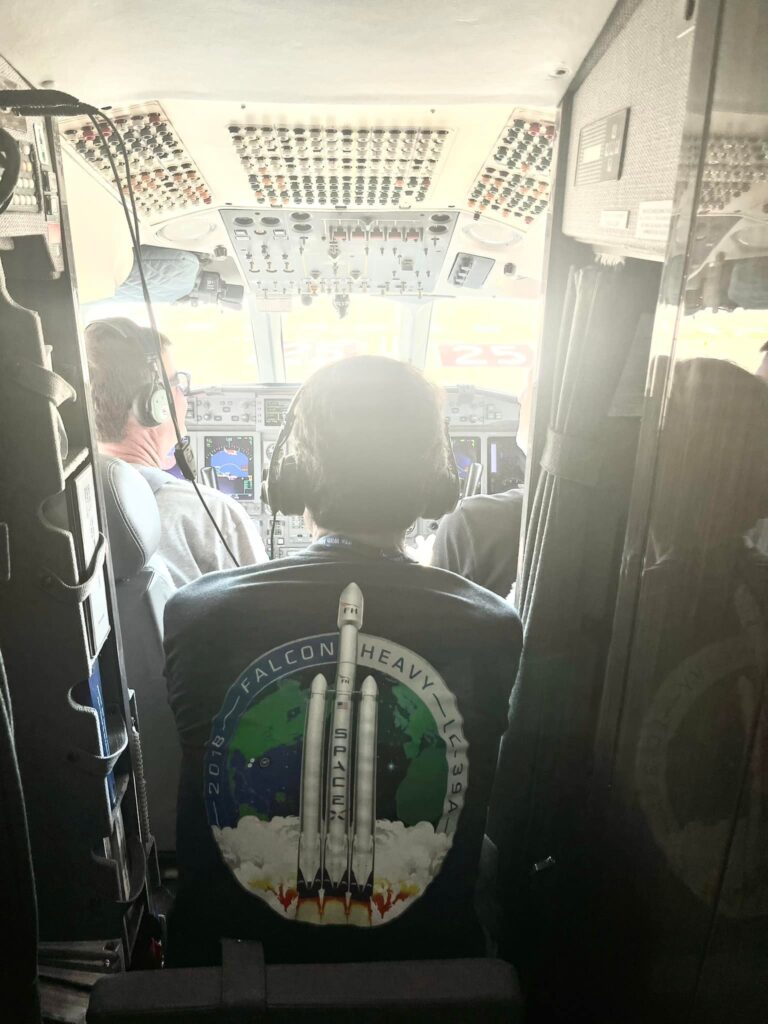
Anyone who knows me knows I have a soft spot for anything that flies—with the notable exceptions of mosquitoes and those terrifyingly winged monkeys from The Wizard of Oz. I was convinced as a kid that one of those flying demons was going to swoop down in broad daylight and snatch me out of the backyard. To this day, I still can’t watch that movie without feeling a bit anxious. That said, if it flies and doesn’t cackle or drink blood, I’m a fan. I’m particularly fond of fixed-wing aircraft (i.e., airplanes). I like helicopters, too, despite their apparent defiance of basic aerodynamic laws. But rockets? Rockets have always held a special place in my heart. As a kid, I built and launched many model rockets, all of them powered by what were marketed as “engines” but which were, in fact, firecrackers on steroids. Somehow, despite numerous close calls and at least one near miss involving my sister, I still own all ten of my fingers and both eyes. Like most kids growing up in the golden age of space exploration, I saw astronauts as gods, encased in their white flights suits and bubble helmets. I’m old enough to remember all of the Apollo missions, back when going to the moon was something mankind actually aspired to. As a newspaper reporter, I once was assigned to cover the landing of the Space Shuttle Columbia at White Sands Missile Base in New Mexico. Watching it touch down was like watching Zeus himself hurtling in from Olympus on a flaming chariot. These days, I get my rocket fix a little closer to home. I live not far from Vandenberg Space Force Base, where launches of SpaceX rockets lugging communications satellites into low earth orbit have become frequent enough that I’ve started to recognize the size of the rockets merely by the severity of the window-rattling sonic booms they produce. (Pro tip: the Falcon 9 sounds like God kicking a dumpster full of anvils.) Naturally, my enthusiasm for spaceflight led me to acquire a few SpaceX t-shirts on eBay. They’re comfortable, reasonably priced, and they have rockets on them. What more could I ask for? I wear them proudly—at least, I used to. This is where things get complicated. As most people know, SpaceX is owned by Elon Musk, a man who is either a visionary genius, a chaos agent, or possibly just a very rich guy with too much time on his hands. No matter how you view him, however, one thing is clear: the man definitely is polarizing. And in my household, let’s just say he’s not exactly winning any popularity contests. My wife—who is as rational and tolerant as she is politically aware–has gently but firmly informed me that wearing SpaceX merch in public is, in her opinion, “not a great look.” She hasn’t banned the shirts outright, mind you. That would imply I have no autonomy, which I do. In theory. But she has made her displeasure known through a highly effective combination of sighs and subtle-but-devastating comments like, “Are you sure you want to wear that to dinner with the neighbors?” So now, my beloved SpaceX t-shirts are mostly relegated to in-home use, joining the ranks of other rarely worn garments, including my vast collection of Denver Broncos team jerseys, and the “Parrot Head” tank top I bought years ago at a Jimmy Buffett concert. Even inside the house, wearing a SpaceX t-shirt will draw frowns of disappointment that read, “I can’t believe I married this man.” I try to explain that I’m not endorsing Elon Musk—I’m endorsing his rockets. The marvel of science. The miracle of controlled explosions. But nuance, apparently, does not fit comfortably on cotton-poly blend. I wish everything wasn’t so political these days. Can’t a guy just wear a comfy shirt with a rocket on it without having to issue a disclaimer? I’m not aligning myself with any ideology—I just like things that go “whoosh” and defy gravity. That’s it. If the rocket also happens to be designed by a weirdo billionaire with 14 children, that’s, well, unfortunate, but it’s not really the rocket’s fault. It’s hard being a rocket enthusiast in the era of outrage. I feel like I need to carry a little card in my wallet that says: “The opinions expressed by this t-shirt do not necessarily reflect those of the wearer. He just likes things that fly.” Still, I wear them. Not to make a point or start an argument—just quietly, when she’s out of town or working late. There’s no rebellion in it. There’s something about putting on a shirt with a rocket on it makes me feel a little more like my younger self—the kid who thought (and still does) that astronauts are indeed the embodiment of The Right Stuff. My wife doesn’t love the association, and I respect that. Marriage, after all, is built on a thousand tiny negotiations and arrangements. She gives me room to indulge my quirks, and I try not to wear my quirks in public. But now and then, when the coast is clear and the house is quiet, I’ll put on one of my SpaceX t-shirts, step outside, and look up—just in case something’s launching. In that moment, politics fade, and all that matters is the sky.
Book lovers, thrill-seekers, and snack enthusiasts—unite!

This Saturday, come hang out at Tecolote Book Shop (1470 E. Valley Road, Montecito) for a reading and signing of my new Cordell Logan adventure, DEEP FURY. Logan’s a former government assassin turned flight instructor.I’m the guy who keeps making his life complicated—for your reading pleasure. We’ll have books, snacks, drinks, and hopefully a few laughs.Hope you can make it—it won’t be the same without you!
Where Did “Bougie” Come From, and Why Are We All Expected to Know What It Means?—A Totally Not-Bitter Linguistic Rant

Let’s talk about bougie. Not because I want to, but because apparently, I have to. One minute I’m living my life peacefully, eating Cheez-Its from the box like a perfectly normal person, and the next, someone tells me that my snack of choice is “not very bougie.” Suddenly I’m spiraling. Do I want to be bougie? Am I supposed to be? Is Cheez-Its-from-the-box anti-bougie or post-bougie? Is there a chart? This, dear reader, is the modern linguistic dilemma: the way new slang drops into the public consciousness like a Taylor Swift album. Suddenly everybody else understands its significance, and you’re just standing there, Googling it on your phone under the table like a complete doofus because you have no idea what it means. But let’s back up a bit. The word bougie is a shortened version of bourgeois, which you may have tripped over in high school English class during a bored reading of Animal Farm. Originally, the word referred to the middle class—especially those with materialistic values. But somewhere along the way, bourgeois got rebranded, dropped a few syllables, and emerged as bougie, ready for its close-up in Instagram captions and conversations with predominately younger people. Now, bougie isn’t just a word. It’s a vibe. It’s used to describe anything fancy, overpriced, curated, artisanal, or generally engineered to look fabulous but cost at least 40% more than it should. Think charcuterie boards, pet acupuncture, or a $19 salad with edible flowers and hand-crafted croutons milled exclusively from Durum wheat. Like so many words before it, bougie didn’t arrive through official linguistic channels. There was no press release. No public service announcement from Merriam-Webster. It just showed up one day—probably in a tweet—and everyone pretended they’d known it forever. This isn’t new. Every generation has its linguistic curveballs. Think back to the first time you heard someone say woke and weren’t sure if they meant well-rested. Or when ghosting stopped being something Casper did and started referring to people vanishing like magicians with commitment issues. Or the moment super became an adjective or adverb sprinkled on literally everything. Super cute. Super annoying. Super not okay. Somewhere along the line, apparently, very wasn’t cutting it anymore. We now needed our intensifiers wearing spandex and capes. Suddenly, your neighbor wasn’t just tired—she was super tired. Your pancakes were merely good—they were super good. And let’s not even talk about the time your friend described their relationship with their ex as “super complicated,” which turned out to mean, “We broke up last year but still share custody of the cat.” It’s like someone gave the English language a Red Bull and said, “Here, drink this and go wild.” And it did. What’s especially maddening is how these words are used with such confidence—by teenagers, coworkers, and that one snarky barista at Starbucks with the septum piercing who always judges your order. Suddenly, you’re the weird one for not knowing what cheugy means. (Side note: I still have no idea. I think it means Millennial, but in a rude way.) We live in an era of accelerated language evolution. Social media these days can turn slang into a viral commodity, spreading words faster than a case of measles in Texas. One clever TikTok video and, boom, a word can go from obscure to omnipresent overnight. Before you can blink, your 85-year-old aunt is misusing it in her Facebook posts, and it’s already uncool. There is, of course, no way to keep up. You can memorize Urban Dictionary like it’s the LSAT. You can lurk silently in Gen Z group chats (though that’s definitely not cool). But eventually, some shiny new word will appear, and you’ll do what we all do: nod like you get it, then frantically Google it. Even worse, once you do figure it out and start using the word with some degree of confidence, the youths of America will inform you—often with a condescending smile—that it’s “cringe” now. (Which, by the way, used to be a verb and is now apparently a lifestyle assessment.) So where does this leave us? From my perspective, ever confused. But also kind of in awe. Because, as frustrating as this ever-shifting lexicon is, it’s also proof of how alive language can be. Words aren’t fixed in time. They evolve, morph, shed meaning, gain swagger, and show up whether you invite them or not. And yes, that means we’ll never be fully caught up. We’ll always be chasing after the latest slang term like when you were a kid and there goes the ice cream truck. But maybe that’s okay. Maybe part of being human in the 21st century is learning to live with linguistic whiplash and accepting that someday—probably soon—bougie will be replaced by something even more baffling, like plunch (my prediction for 2026: a brunch/lunch hybrid served exclusively on uncomfortable furniture). Until then, I’ll keep eating my Cheez-Its from the box and pretending I’m grounded and humble–not because I can’t afford goat cheese-stuffed, Castelvetrano olives or truffle popcorn, but because I reject elitist snack culture. Or maybe, quite possibly, I’m just not bougie enough.
The Perfect Game
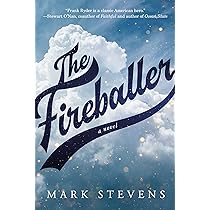
Upon occasion, you come across a novel that—if you’ll pardon the cliché—hits it out of the park. You crack open the first page, and by page two, you know you’re in trouble. The kind of trouble that keeps you up past midnight, ignoring text messages, blowing off obligations, and contemplating how much sleep you really need before work the next morning. The story grabs you by the (insert your favorite anatomical reference here) and refuses to let go. The Fireballer, written by former journalist and veteran novelist Mark Stevens, is one such novel. Set against the backdrop of Major League Baseball, the book immediately transported me back to a world I once held dear. As a kid, I followed the game religiously. But as an adult, I drifted away—disillusioned by the rise of free agency in the early 1980s, when it seemed that players hopped from team to team like free radicals. What used to feel like a lifelong bond between athlete and city began to resemble a rotating-door business contract. Keeping up with who played for whom became a full-time job in itself. Throw in the designated hitter rule—don’t get me started!—and I all but checked out of the game entirely. But The Fireballer might just woo me back. The story follows Frank Ryder, a once-in-a-generation pitching phenom out of Denver’s Thomas Jefferson High School who signs with the Baltimore Orioles. Frank possesses an almost mythic gift: a 110-mile-an-hour fastball that is, quite literally, unhittable. His ability on the mound is both awe-inspiring and dangerous, threatening to upend the sport’s fragile equilibrium. But while the novel might sound like a classic sports underdog story on the surface, calling it “a baseball book” hardly does it justice. At its heart, The Fireballer is a powerful character study. It’s about what it means to be human in a system that often demands setting your humanity aside. Frank is not just a pitcher—he’s a thoughtful, wounded, deeply principled young man navigating a game, and a life, where morality and ambition don’t always align. I cannot remember the last time I felt such admiration and such ache for a fictional character. Frank Ryder isn’t just well-drawn; he’s unforgettable. Mark Stevens is a masterful writer. His prose is elegant without being showy, innovative without being overwrought. There’s a rhythm to his writing that mirrors the tempo of the game itself—deliberate, precise, unhurried but filled with tension. I found myself reading slowly on purpose, lingering over certain passages, re-reading others, not wanting the book to end. His world-building is airtight, his research unobtrusively embedded in the fabric of the narrative. As any writer knows, credibility matters. Get one small detail wrong, and the illusion can break. But Stevens is in full command of his material. He pulls off the literary equivalent of a perfect game. The Fireballer is an astonishing achievement. It would make a great movie. Whether or not you love baseball, I promise, you’ll love this book.
The Write Stuff
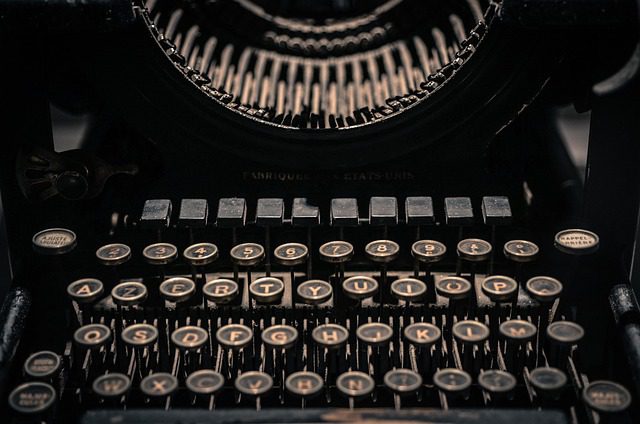
Back in the day—at the dawn of the Internet and long before anyone had heard of social media—I was a working investigative reporter. For nearly two decades, I clocked in at a daily newspaper, chasing leads, combing through dusty archives, and persuading often-reluctant sources to talk to me. I’d spend weeks, sometimes months, stitching together narratives meant to expose wrongdoing, uncover injustice, or shine light into some dark, bureaucratic corner where truth had been shoved aside. I did it under the aegis of something I deeply believed in: the public’s right to know. For me, the First Amendment wasn’t just a phrase etched in civics textbooks—it was the north star guiding everything I did. Sometimes, those stories made a difference. A few launched official investigations, prompted reforms, made the world a little safer, or more just. They rattled the cages they were supposed to rattle. But far more often, they landed with a thud. A collective shrug. A few congratulatory or angry phone calls, maybe a letter or two to the editor, and then—poof—it was on to the next story. It began to feel after a while like I was launching satellites into deep space, hoping to make contact with intelligent life forms, only to be met with static. My growing sense of futility was one of the big reasons I eventually decided to step away from daily journalism and try something new. I still wanted to tell stories. I still cared about truth and human nature and justice. But I needed to find a different way to reach people. One of those ways was writing mystery novels. And what a different experience it’s been. With fiction, the feedback is immediate—and passionate. Readers don’t hesitate to email me about how much they enjoy my Cordell Logan series, including the most recent installment, Deep Fury (and yes, I’m working on the next one!). But they also don’t hesitate to tell me when I’ve missed the mark in their opinion.. Maybe a character’s timeline doesn’t quite add up. Maybe I botched the name of a weapon or slipped on a bit of aviation lingo. Or maybe a plot twist left them more confused than intrigued. To all of which I say: bring it on. Truly. I welcome every bit of it—praise, criticism, nitpicks and all. Because unlike those long-ago days in the newsroom, when I often felt like I was typing into the void, writing novels has connected me with a real, responsive, thoughtful community of readers. You’re out there. You’re paying attention. And best of all, you care enough to write. That means the world to me. When I was a kid, I used to write letters to my favorite authors. I’d mail them in care of their publishers, laboring over every word. These weren’t dashed-off notes. I rewrote those letters over and over, knowingt they’d be read by true masters of the craft. And I always enclosed a self-addressed, stamped envelope. The best response I ever got—the one that made me feel like maybe, just maybe, I could one day become a real writer—arrived one glorious morning from… Just kidding. No one ever wrote back. Not a single author. Talk about a waste of good postage. And yet, I don’t regret sending those letters. Even then, I understood that writing—at its best—is a form of reaching out, of trying to connect. I only wish those authors had reached back. Now that we’re all living in the Digital Age, a dialogue between a writer and their readers is easier than ever. You no longer need to track down a publisher’s mailing address or lick an envelope. You don’t have to worry about stamps or whether your SASE has enough return postage. Most authors—including me—have a website with a contact page or a direct email link. You can reach out in a few seconds, no matter where you are in the world. And please believe me when I say this: I will write back. Every email I get from a reader is read by me personally, and every one gets a reply. Why? Because if you’ve taken time out of your busy life to read my work—whether it made you laugh, think, cry, or just helped you pass a few hours on a cross-country flight—that’s an incredible gift. If you then take even more time to send a message and tell me what the book meant to you, or what didn’t quite work, or just to say hello, the least I can do is return the favor. So drop me a line. Let me know what you think—about Logan, the books, or anything else on your mind. Tell me what you liked, what you didn’t, or what you want to see next. Tell me what made you laugh or what made you roll your eyes. I promise I’ll listen. And best of all? No postage stamps will be harmed in the making of our conversation. Looking forward to hearing from you soon. —David
Made My Day
When you’re an author, there’s little better than landing a positive book review, especially from someone who truly knows the craft. My gratitude to Mark Stevens, an author whose talents far exceed mine, for this terrific assessment of Deep Fury, my latest Cordell Logan mystery. https://markhstevens.wordpress.com/2025/03/28/david-freed-deep-fury/
Please Return Your Seatback to its Full and Upright Position!
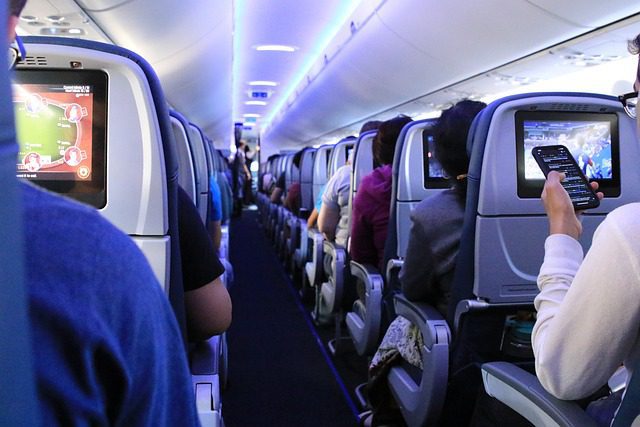
I fly frequently enough on United Airlines that I qualify as a “Premier” passenger. As a reward for my brand loyalty—to the extent anyone can be loyal to any airline these days–I get to be among the first to board the plane, which we all know usually means having enough room in the overhead bin to stow your carry-on bag. It also usually means I get to sit toward the front of the plane in what United calls “Economy Plus”. It’s where there’s a bit more legroom and where you don’t feel quite like those other poor wretches way back in the back packed in like sardines in a can—except sardines at least have the dignity of being packed in oil, not in some stranger’s armpit, which is often the case these days flying commercially. I’m old enough to remember when airline travel was luxurious, even for those of us who could never begin to afford flying first class. Delicious meals were served piping hot on real china plates with real silverware by flight attendants who all looked like Miss America contestants or like they’d just stepped off the cover of Vogue magazine. Those days, of course, are but a distant memory. Today we’re crammed into passenger cabins that always seem too hot or too cold, assigned thinly padded seats inspired by the Marquis de Sade, even in Economy Plus, and made to endure a veritable aluminum torture chamber of body odors, screaming infants, and flight attendants who exude all the charm of DMV employees working their last shifts before retirement. But, hey, at least those little bags of pretzels are free! Not long ago, I had to fly on short notice from California to Washington, D.C. Every flight unfortunately was full by the time I booked my reservation. The only seat I could snag was a middle seat near the tail, where you’re allowed just enough room to remind you that you have two knees, but not enough room to use them. To make matters worse, by the time I boarded, the overhead bins were already filled, requiring me to stuff my backpack under the seat in front of me, reducing my leg room even further. The guys to my left and right were both big enough that in a fair and just world, each of them would have been required to pay for a second seat instead of absorbing part of mine. I quickly realized that for the next four hours and change, the notion of personal space would be but a mere concept. We were no sooner airborne when the middle-aged woman sitting in front of me reclined her seat all the way back. Suddenly, what little breathing room I had was gone. Her seatback was now inches from my face, so close that I could count the stray gray hairs clinging to her headrest. My tray table was practically embedded in my stomach, and any hope of finding a position that would ensure continuous blood flow to my legs was officially dashed. I was stuck. This, of course, raises one of the most contentious debates in modern air travel: Is it ever acceptable to recline your seat on a crowded airplane? Ask ten travelers, and you’ll get ten different answers, ranging from, “It’s my right!” to, “Only inconsiderate jerks do that!” The airlines conveniently provide the recline function but offer no guidelines on when, or if, it should be used. It’s like giving Elon Musk a chainsaw without directions. Don’t get me wrong. I understand the impulse to claim a little more territory in the pursuit of personal comfort on these increasingly uncomfortable, glorified Greyhound buses. The problem is that in today’s economy class, reclining isn’t so much about enhancing your comfort as it is about obliterating someone else’s. Take my situation on this particular flight: My knees were already pressed against the seat in front of me before the woman sitting in said seat reclined. Once she leaned back, I had two choices—sit there, locked in some bizarro yoga position hardly of my choosing, or become one of those individuals who passive-aggressively knee the seat in front of them in protest. I chose the former, mainly because I still clung to a shred of human decency, and also because I was concerned about the possibility of any mid-air altercations making Instagram or TikTok. As I sat there, contemplating my life choices, I wondered was she even aware of the havoc she had unleashed? Did she assume that because her seat had a recline button, it was her obligation to use it to its full potential? Or was she simply one of those people who exist in their own oblivious, situationally unaware bubble? I fantasized about gently tapping her shoulder and explaining that, in recognition of the Geneva Convention and fundamental human decency, perhaps we could negotiate a compromise—say, a slight recline, rather than going full La-Z-Boy. I also wondered what wiseguy flight instructor and former government assassin Cordell Logan would do under similar circumstances. Logan, for those of you who’ve read Deep Fury, Flat Spin, Voodoo Ridge, or any of the other of my books, know that he probably would’ve been more confrontational in a glib, persuasive kind of way, before resorting to any hands-on remedy. But I’m not Logan, even if I did conceive him. Instead, I stewed in silence at 33,000 feet, trying to distract myself with the book I’d brought along–Rachel Maddow’s excellent Prequel, a detailed, investigative account of German propaganda efforts and America’s pro-Nazi movement in the runup to World War II. Time slowed to nothing as I read and our plane crept along at what felt like a glacial pace. Every few minutes, the flight attendants would stroll by with their beverage cart, yelling, “Watch your knees and elbows!” while banging into various knees and elbows. Cocooned as I was between my two fat seatmates, at least I didn’t have
A Horse Named Deep Fury

All I know about horse racing is what I learned reading Laura Hillenbrand’s excellent Seabiscuit and the movie based on it. Both were about an underdog horse and a down-on-his luck jockey who together won a big race and inspired many people to persevere during the Great Depression. When I was in college, I also read William Faulker’s Pulitzer Prize-winning novel, The Reivers, which as I vaguely recall has something to do with horse racing, though the main story centers on three rascals who steal a car in rural Mississippi. I’ve also attended a few parties over the years at which the Kentucky Derby was televised, however I typically was too busy eating and bending an elbow to pay much attention to who crossed the finish line first. In person, I’ve watched the ponies run (is that still an expression?) exactly once in my life. Several years ago, my wife and I spent an afternoon at Hollywood Park, a thoroughbred race course located below the final approach path of the west-facing runways at Los Angeles International Airport. The track isn’t there anymore. It was demolished years ago to make way for a professional football stadium. The only thing I remember from that day at Hollywood Park was making several $2 bets on different horses based on gut hunch and whether we liked the colors of the jockeys’ racing silks. Suffice it to say, fools and their money are soon parted. All of which leads me to an email I received the other day from a fan in Australia named William who wrote to tell me how much he enjoyed Deep Fury, my most recent Cordell Logan mystery novel. He also was curious to know if I’d stolen the book’s title from an Australian race horse that also happens to be named Deep Fury. I was surprised. I’d never heard of Deep Fury, the horse. “Mere coincidence,” I responded. “And what kind of name is that for a horse, anyway? What do they call him for short—Deep?” William, who said he tends bar at a swanky hotel in Brisbane, disregarded my albeit rhetorical question and responded appropriately enough with a joke about a horse that walks into a bar. The bartender asks the horse, “Why the long face?” I’m still working on a clever response. Meanwhile, I’ve done a bit of research on my new equine relative. I discovered looking at pictures of him on line that Deep Fury the horse is quite a handsome lad. He’s a five-year-old bay gelding whose home track is the Sunshine Coast Turf Club on Australia’s west coast, about an hour north of Brisbane, near the totally cool-sounding towns of Currimundi and Caloundra. He’s run 27 races as of this writing and won two of them, earning purses totaling $95,200 Australian dollars, which is about $59,400 in US dollars. Not exactly Seabiscuit money but, hey, you’ve gotta start somewhere. There’s a lesson here, I think. As a writer of mystery novels, I’ve always been fascinated by fiction, as with real life itself, can often take unexpected turns. My random connection to a horse named Deep Fury is a good example. It reminds me how fiction and reality can sometimes intersect in wonderous ways. In my books, I thrive on those kinds of intersections–the twists and subtle details that keep readers guessing in the same unpredictable yet plausible ways we all face every day. Writing mysteries is about creating layers of intrigue, where nothing is ever quite as it seems. When my friend William first informed me of about Deep Fury, the horse, I figured it was just a coincidence in names. But the more I’ve pondered it, the more it feels to me like some small clue—a link between stories real and imagined, and in ways I could’ve never anticipated. It is these kinds of unanticipated encounters where my belief in kismet is affirmed, and in the realization that the best stories often arrive from the most obscure places. It’s not always the obvious twists that matter, but the ones we least expect. Whether in a mystery novel or in real life, discovery is what keeps us moving forward. Who knows? The next plot twist might come from an email, a corny joke, or even a horse halfway across the world.
